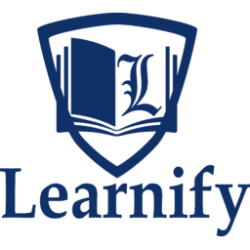OSHA Standards and Compliance Training Course
Introduction
The Occupational Safety and Health Administration (OSHA) establishes and enforces safety standards to protect workers and create safer workplaces. This comprehensive training course is designed to provide participants with an in-depth understanding of OSHA standards, compliance requirements, and strategies to ensure workplace safety while avoiding violations and penalties. The course incorporates modern challenges and emerging trends, preparing organizations to adapt to future changes.
Course Objectives
By the end of this course, participants will:
- Gain an understanding of OSHA standards and regulations.
- Learn how to conduct workplace hazard assessments and implement corrective measures.
- Understand recordkeeping, reporting, and inspection requirements.
- Explore strategies to develop an OSHA-compliant safety program.
- Prepare for OSHA inspections and address potential violations.
- Identify future trends and challenges in OSHA compliance and workplace safety.
Who Should Attend?
This course is ideal for:
- Safety and health professionals
- HR managers and compliance officers
- Supervisors and team leaders
- Facility managers and risk managers
- Business owners and decision-makers
- Anyone responsible for workplace safety and regulatory compliance
Advanced 5-Day Course Outline
Day 1: Overview of OSHA Standards and Requirements
Session 1: Introduction to OSHA
- History, mission, and scope of OSHA
- Key responsibilities of employers and employees under OSHA
Session 2: OSHA Standards and Regulations
- General Industry (29 CFR 1910)
- Construction (29 CFR 1926)
- Maritime and Agriculture standards
Session 3: Understanding Worker Rights and Employer Responsibilities
- Employee rights to a safe workplace and training
- Employer duties for compliance and hazard mitigation
Day 2: Hazard Identification and Risk Management
Session 1: Conducting Workplace Hazard Assessments
- Identifying physical, chemical, biological, and ergonomic hazards
- Using OSHA’s Hazard Identification and Assessment Tool (HIAT)
Session 2: Developing Hazard Control Programs
- Hierarchy of controls: Elimination, substitution, engineering, administrative, and PPE
- Best practices for implementing and monitoring controls
Session 3: Special Focus on High-Risk Areas
- Lockout/tagout, confined spaces, machine guarding, and fall protection
- Case studies: Addressing common compliance gaps
Day 3: Recordkeeping, Reporting, and Training Requirements
Session 1: OSHA Recordkeeping Standards
- OSHA 300, 300A, and 301 forms: What to record and report
- Practical exercise: Completing OSHA forms with sample scenarios
Session 2: Reporting Workplace Incidents and Inspections
- Reporting requirements for injuries, illnesses, and fatalities
- Understanding the inspection process and common triggers for inspections
Session 3: Employee Training and Communication
- OSHA requirements for training and education
- Developing engaging and effective training programs
Day 4: Preparing for OSHA Inspections
Session 1: What to Expect During an OSHA Inspection
- Inspection types: programmed, unprogrammed, follow-up, and imminent danger
- Steps in an OSHA inspection: opening conference, walkaround, and closing conference
Session 2: Avoiding Common Violations
- Top 10 OSHA citations and how to address them
- Practical strategies to reduce the risk of non-compliance
Session 3: Responding to Citations and Violations
- Understanding penalties and abatement processes
- Developing an action plan to address and resolve citations
Day 5: Future Challenges and Compliance Strategies
Session 1: Emerging Trends in Workplace Safety and OSHA Standards
- Adapting to advancements in technology, automation, and remote work
- Addressing psychosocial hazards and mental health in compliance programs
Session 2: Building a Culture of Compliance and Safety
- Leadership strategies to embed safety in organizational culture
- Role of safety committees and continuous improvement
Session 3: Developing a Comprehensive OSHA Compliance Plan
- Group project: Creating an OSHA-compliant safety program for a sample workplace
- Presentations and peer feedback
Conclusion and Next Steps
- Certification of completion
- Access to tools, templates, and resources for OSHA compliance
- Networking opportunities with peers and industry experts

